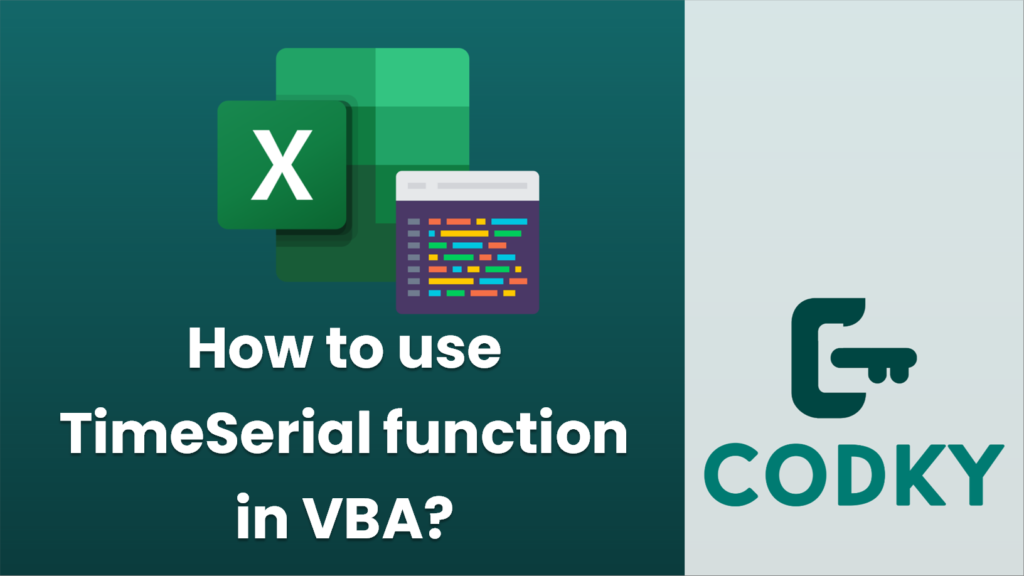
In VBA (Visual Basic for Applications), the `TimeSerial` function returns a Variant of subtype Date for a specified hour, minute, and second. This function is handy when you need to create a time value within your code.
Here’s the syntax for the `TimeSerial` function:
TimeSerial(hour, minute, second)
- `hour`: The hour value (0 through 23).
- `minute`: The minute value (0 through 59).
- `second`: The second value (0 through 59).
Below is an example of how to use the `TimeSerial` function:
Sub DemonstrateTimeSerial()
' Declare a variable to hold the time.
Dim someTime As Date
' Use the TimeSerial function to create a time value.
someTime = TimeSerial(14, 30, 0) ' This will create a time equivalent to 2:30:00 PM.
' Display the created time in a message box.
MsgBox "The created time is: " & Format(someTime, "hh:mm:ss AM/PM")
End Sub
In this example, the `TimeSerial` function is used to create a time value representing 2:30 PM. The `Format` function is then used to format the time as a string in a 12-hour format with an AM/PM specifier, which is then displayed in a message box.
Remember that the `TimeSerial` function will handle overflow. If you specify a value outside the usual range for hours, minutes, or seconds, it will calculate the time accordingly. For example, `TimeSerial(25, 0, 0)` will be interpreted as 1:00 AM the next day.
To run the above VBA code, you would typically insert it into a VBA module in an Excel workbook via the Microsoft Visual Basic for Applications editor, which you can access by pressing `ALT` + `F11` in Excel. Then you can run the procedure by pressing `F5` while the cursor is inside the procedure or by attaching the subroutine to a form button or other control.






